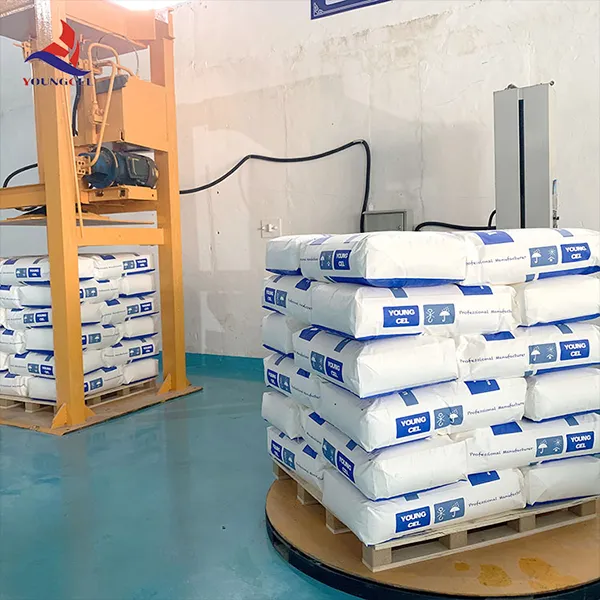The Role of Cellulose and HPMC in Paint Formulations
In the ever-evolving world of paint formulations, various additives and compounds are crucial in enhancing the properties and performance of the final products. Among these, cellulose derivatives, particularly Hydroxypropyl Methylcellulose (HPMC), play a significant role in achieving desired characteristics in both water-based and solvent-based paints. This article explores the function of cellulose and HPMC in paint formulations, highlighting their benefits, applications, and the science behind their effectiveness.
What is HPMC?
Hydroxypropyl Methylcellulose (HPMC) is a non-ionic, water-soluble polymer derived from cellulose. It is synthesized through the modification of cellulose, where hydroxypropyl and methyl groups are introduced to the cellulose chain. This process not only improves solubility in water but also enhances the film-forming properties of the polymer. HPMC is often employed in various industries, including pharmaceuticals, construction, and food, with its applications in the paint industry being particularly noteworthy.
Functions of Cellulose and HPMC in Paint
1. Thickening Agent One of the primary roles of HPMC in paint formulations is to act as a thickening agent. By increasing the viscosity of paint, HPMC ensures better suspension of solid particles, preventing settling and maintaining homogeneity. This property is especially important in water-based paints, where adequate viscosity contributes to better application characteristics.
2. Improved Application Properties HPMC enhances the flow and leveling properties of paint. When used in appropriate concentrations, it allows for smoother application, reducing the appearance of brush strokes and roller marks. This characteristic is vital for ensuring a high-quality finish and can significantly impact the overall aesthetic of painted surfaces.
3. Film Formation and Adhesion HPMC contributes to the formation of a cohesive and durable film upon drying. It improves adhesion between the paint and various substrates, such as wood, metal, or drywall. This adhesion is crucial for preventing peeling or flaking over time, ensuring the longevity of the paint job.
cellulose hpmc for paint

4. Water Retention The water-retention capabilities of HPMC are particularly significant in preventing premature evaporation of the water in latex paints during application. This property allows for better working time and open time, enabling painters to work longer without the paint drying too quickly. Consequently, this characteristic minimizes the chances of defects such as roller marks or lap lines.
5. Stability and Shelf Life When incorporated into paint formulations, HPMC can enhance the stability and shelf life of the product. It helps to maintain a uniform consistency over time, preventing separation of materials and preserving overall quality. This stability is crucial for manufacturers and consumers alike, ensuring that paint remains usable even after extended storage periods.
Environmental Considerations
As the push towards eco-friendly products grows, the use of HPMC aligns well with sustainable practices. Being derived from natural cellulose, HPMC is biodegradable and presents a lower environmental impact compared to synthetic thickeners. Additionally, water-based paints containing HPMC are typically associated with lower levels of volatile organic compounds (VOCs), making them a more environmentally friendly option.
Applications in Paint Formulations
HPMC is utilized in a wide range of paint formulations, from architectural coatings to artist paints and specialty coatings. In architectural paints, it provides user-friendly characteristics for both professional and DIY applications. In artist paints, it can help achieve the desired texture and viscosity, allowing for greater artistic freedom. Moreover, in specialty coatings, such as those used for industrial or protective applications, HPMC contributes to enhanced performance attributes, including corrosion resistance and durability.
Conclusion
In conclusion, the incorporation of cellulose derivatives, particularly Hydroxypropyl Methylcellulose (HPMC), into paint formulations plays a pivotal role in improving performance characteristics. With its ability to act as a thickening agent, enhance application properties, promote film formation, and ensure stability, HPMC is an invaluable additive in the paint industry. As the demand for eco-friendly products continues to rise, HPMC offers a sustainable alternative that meets the needs of modern consumers while maintaining the quality and performance expected from high-grade paints. By understanding and leveraging the properties of cellulose and HPMC, manufacturers can create superior paint products that cater to the diverse requirements of end-users.






